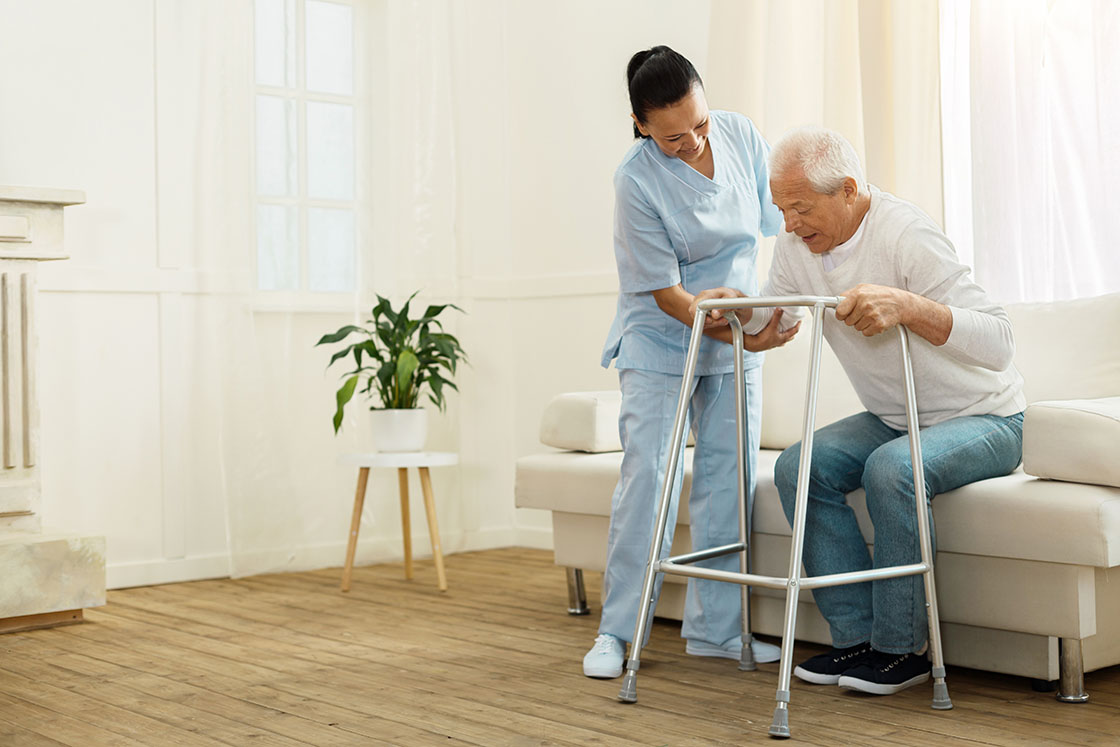If you need help getting around, you might consider a walking aid, such as a walker or a cane. These devices can help you maintain mobility. But keep this in mind: A walking aid can be risky if it isn’t fitted properly. It can also be risky if you haven’t been shown how to use it. If you think you could benefit from a walking aid, talk to your doctor and a physical therapist to help make sure that you:
Get the product that is best for you
Are trained how to use the device
With these precautions, you can help be sure that your walking aid:
Offers support
Improves your balance
Helps reduce your risk of falling
The right cane for you.
According to the American Geriatrics Society (AGS), you can support up to 25 percent of your weight with a cane. To measure for a cane, the AGS recommends standing with your arm bent 20 to 30 degrees at the elbow. Then have someone measure from your wrist to the floor—this is the right length for your cane. Generally, a cane should come up to the crease in your wrist when you stand straight with your elbow bent a bit. When walking with a cane, use it on the opposite side of your injury or weakness.
With all of your weight on your healthy leg, move your injured leg and the cane so that both swing forward and touch the ground at the same time. Then step through with your unaffected leg.
A well-fitting walker.
According to the AGS, you can support up to 50 percent of your weight with a walker. As with canes, walkers are measured from your wrist to the floor. Both canes and walkers are typically as tall as your hip socket. When using a walker, roll it about a step’s length ahead. With both hands on the walker, lean forward, partially support yourself with the walker and take a step.
We can help.
People who may benefit from the use of a walking device include those who have had a stroke or who have:
Balance disorders
Arthritis
Injured or weak hips, feet, or legs.
Our physical therapists can help you choose the right aid and make sure it is the right size. They can also show you how to:
Walk
Sit
Climb stairs
Turn around
Reduce your risk of falling.
For more information on maintaining a safe lifestyle while aging and to learn more about On Lok’s services, please visit our website.
